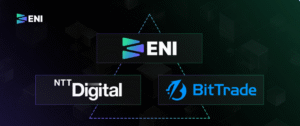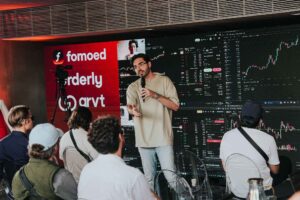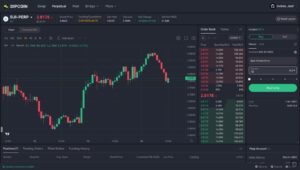
In February of 2024, we looked ahead at the DePIN sector and analyzed how to select promising projects within the DePIN landscape, specifically highlighting Roam as a leading project, which has migrated to Solana.
Roam aims to establish a decentralized global WiFi roaming network. Allowing seamless connectivity to over 3.5 million OpenRoaming™ WiFi access points and providing enterprise-grade WiFi roaming services.
A $5 million strategic fundraising had been completed by the end of 2023. The strategic round was led by Anagram and Volt Capital, and now Roam has attracted another crucial investor: Samsung Next.
Both Samsung and Roam are members of the Wireless Broadband Alliance (WBA) organization and share a common vision of achieving seamless global WiFi roaming. According to Korean media outlet Global Economic, the funding will help Roam accelerate the establishment of a global WiFi roaming node network.
The background of Samsung Next
Samsung, a household name, has business operations spanning electronics, aviation, chemicals, machinery, shipping, insurance, and healthcare, making it Korea’s largest conglomerate. A saying in Korea goes, “A Korean cannot avoid three things in life: taxes, death, and Samsung.”
Samsung’s revenue accounts for about 20% of Korea’s GDP, and its business influence is global. For instance, the world’s tallest building, the Burj Khalifa in Dubai, and the second tallest, Merdeka 118 in Kuala Lumpur, were constructed by Samsung C&T.
Samsung Electronics, with its Galaxy series of phones and computers, competes globally with Apple. To maintain its market leadership, Samsung continuously explores cutting-edge technologies. Besides setting up Samsung Innovation Labs within the group to foster innovation, it has established several investment funds to participate in high-potential companies and projects. Samsung Next, which invested in Roam, focuses on early-stage emerging technologies.
Samsung Next, formerly known as the Samsung Global Innovation Center, primarily invests in early-stage companies with a focus on future strategic development, disregarding short-term gains in favor of long-term value. According to its homepage, Samsung Next’s investment tracks include artificial intelligence, blockchain, fintech, health tech, infrastructure, and media tech.
In the crypto domain alone, Samsung Next has invested in around thirty projects, covering sectors such as metaverse, NFT, public chains, GameFi, and infrastructure, featuring some phenomenal products. For instance, Axie Infinity, a blockchain-based game, utilizes NFTs to represent virtual pets called Axies. This game triggered a GameFi craze in the last bull market, pushing the application of NFTs and blockchain in gaming.
Bored Ape Yacht Club (BAYC), an NFT project on Ethereum, became a leading NFT collection with its unique art and strong community-driven approach, attracting numerous celebrities and influencers.
Other notable investments include Layer Zero, Sandbox, SAGA, SUI, Aleo, and Messari.
Compared to other crypto investment firms like a16z and Coinbase, Samsung Next’s investments are fewer but more selective, focusing on standout projects rather than the many so-called “copycat” ventures.
Samsung Next’s Only DePIN Investment in Recent Years
In the early stage of the DePIN sector, Samsung Next used to have successful investment experience with DePIN projects such as: IoTeX and Helium. Both of them have developed into the tier one projects in DePIN industry. And in this new circle, Roam is the only DePIN project which Samsung Next invests in the DePIN sector.
Thanks to Web3’s innovative model, Roam has deployed over 360,000 WiFi network nodes in more than 180 countries, providing services to over 480,000 users. Users can also share and use more than 3.5 million OpenRoaming nodes deployed by companies like Boingo, Cisco, and Global Reach on land, ships, and airplanes. Also, according to DePINscan, Roam currently ranks fourth globally in the number of nodes within the DePIN sector.
Roam’s robust background and impressive data are the reasons for Samsung Next’s interest. As Roam continues to grow, it will support the seamless global connectivity of Samsung’s electronic devices.
$ROAM & Economic Model
Tokenomics is always the topic during the conversation of a Web3 project, and Roam is no exception.
Early DePIN projects typically lack substantial funding and need to attract user contributions of resources (like GPU power, storage space) through token incentives to support the network build.
These contributors offer resources covering hardware, bandwidth, computing power, etc., with their token earnings linked to network usage and market demand. The effectiveness and stability of the network also affect their resource utilization benefits, requiring “risk miners” to be willing to bear risks and provide resources for network stability and development.
A well-designed token incentive mechanism creates a positive cycle. Increased demand drives up supply income, forming positive feedback that attracts more participants. Rising token prices attract more speculators and participants, creating value capture. Thus, DePIN projects use token incentives to attract resource suppliers first, then guide users to use the network, achieving the project’s initial growth and development.
Roam incentivizes the adding of public and private shared WiFi in places like cafes, shopping malls, public transit stations, and commercial buildings. The number of incentive Roam Points determinded by the WiFi types and its health level.Roam also has its own miner hardware: Rainier MAX 60, each miner would become a blockchain node and complete the DID+VC verification and data on-chain process when users connect to WiFi.
Roam uses DID+VC to ensure user privacy is respected and protected. DID (Decentralized Identifier): Users decide what identity to use. VC (Verifiable Credential): Users decide what information to disclose. DID+VC ensures users decide which identity and information can be put on the chain.
Roam’s economic model includes:
Roam Points: Roam Points play a central role in Roam’s token system. Users can continuously earn Roam Points (utility token) by adding WiFi or Check-Ins. After TGE (Token Generation Event), Roam Points can be burned for ROAM tokens.
$ROAM token: Users can obtain governance tokens $ROAM through various ways, such as buying on exchanges, burning Roam Points, participating in events, or receiving airdrops. These tokens are primarily used for trading, verifying network services, participating in community governance, and obtaining operational rights.
MetaBlox NFT: Buying a MetaBlox NFT is funtionally equivalent to deploying a Roam router. For the utility of MetaBlox NFT: NFT holders could receive continuous Roam Points reward by the function of cloud mining. Or users could receive $ROAM tokens by the function of NFT staking. This economic model’s benefits lie in its complex interchange mechanisms, and create an intricate yet interconnected token ecosystem, balancing effective incentives and stability.
$ROAM’s launch will be a crucial moment for user engagement. A successful token performance will attract more users to share WiFi networks, enhancing coverage.
More information about Roam:
Twitter:https://x.com/weRoamxyz
Discord:https://discord.com/invite/roam
Medium:https://roamnetwork.medium.com/
Telegram:https://t.me/MetaBlox
I’m a highly experienced and respected author in the field of Cryptocurrencies. I have written numerous articles and books on the subject, and my work is highly regarded by my peers. I have a strong understanding of the technology behind cryptocurrencies, and I am always up-to-date with the latest developments in the space. I am also an active investor in cryptocurrencies, and I have made a significant profit from investing in this new asset class. In addition to my writing and investment activities, I am also an active member of the cryptocurrency community, and I frequently speak at industry events.







